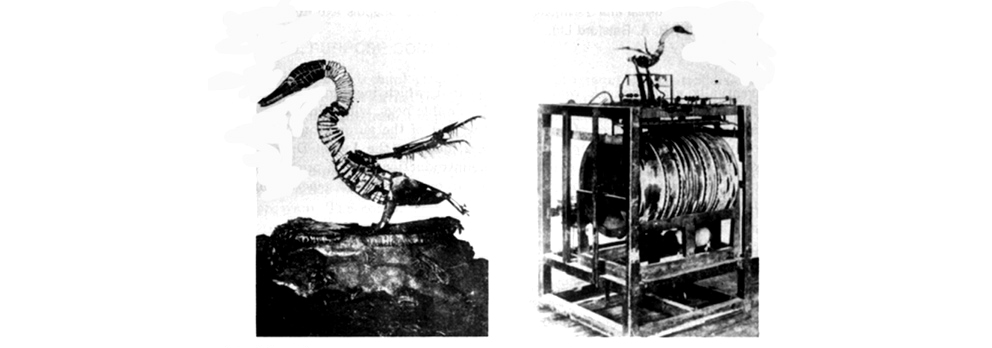According to Leroi-Gourhan: the technological object is nothing outside of the technological ensemble to which it belongs. "As one encounters a new device or system,...it is crucial to ask what the form of this thing presupposes about the people who will use it." (Langdon Winner)
Artifact/ideas: The ideas embodied in material things: the increased crystallization of knowledge and practice in the physical structure of artifacts, in addition to mental structures. Through the combination and superimposition of task-relevant structure, artifacts came to embody kinds of knowledge that would be exceedingly difficult to represent mentally. (see Bruno Latour, "Visualization and Cognition: Thinking with eyes and hands." Knowledge and Society 6: 1-40, 1986.) (see tech philosophy for "the fabrication of scientific facts and technical artifacts." )
Read MoreIn Aristotle's sense of the term, automaton means sheer random happening, and tyche refers to some cause and effect sequence outside the usual pattern of development. In more current usage, an automaton would be a bit of machinery exhibiting somewhat complex behavior but completely lacking in awareness. An automaton is a "self-moving" machine, and the development of control mechanisms led to the possibility of programming automata.
Read More"With the advent of the motor-car the poet, painter, intellectual, was no longer a passive recipient of technological experience, but could create it for himself." (Banham, Theory and Design, p 102)
Read MoreCybernetics: (derives from the Greek word for steersman, which was used by Plato in the sense of "government."):The technology of process control was developed by Norbert Weiner into "the field of control and communication theory (based on statistical information) , whether in the machine or animal" . The terms was first introduced in 1947. See Wiener Cybernetics.
Read MoreIn the Anti-Oedipus, subtitled Capitalism and Schizophrenia, volume 1, and first published in 1972, Gilles Deleuze and Félix Guattari engaged in a radical critique of Freudianism. Like their contemporary, R.D. Laing, and like Wilhelm Reich before them, they linked psychic repression with social repression, and sought to recover the revolutionnary quality of desire.
Read MoreIn all feedback systems, some portion of the output system is used as input. Positive feedback adds the output to the input, leading to "vicious cycles." Negative feedback is self-regulating, inducing the system to approach equilibrium or steady-state. (In communications engineering, these two modes are also called regenerative and degenerative cycles.)
Read MoreFord's factories required a disciplined and deskilled workforce, willing and able to perform repetitive tasks on the assembly line. F. W. Taylor's Principles of Scientific Management published in 1911 had already described how labor productivity could be radically increased by breaking down each labor process into component motions and organizing them according to rigorous standards of time and motion.
Read More"Machine is derived via the Latin machina and from the Greek mechane , meaning tool or machine -- especially an instrument to lift heavy objects, a crane, or a military engine. Perhaps the original word is mëxos, which means an artificial device, especially used against misfortune and troubles.
Read MoreCharles Darwin showed how "organs of extreme perfection and complication, which justly excite our admiration" arise not from God's foresight by from the evolution of replicators over immense spans of time. Freeman Dyson reminds us that life consists of both metabolism and replication, and that the two may have started separately. (In its pure state, replication can only be parasitic.) He subscribes to Lynn Margulis' theory that RNA is the oldest and most incurable of our parasitic diseases. (see prokaryote / eukaryote) Genetics is concerned with the replication and variation of of genes in a population (and their impact on adaptation. (See genotype / phenotype )
John von Neumann proved that a machine could be designed that could replicate itself. The logical problem is how to avoid infinite regress that would require the instructions: "how to build machine (how to build machine (how to build machine (etc.)))" If the instructions merely stated "how to build the machine" it would work once and then stop. The new machine would be unable to replicate itself.
The self-replicating machine requires a certain threshold of complexity with a controller that is able to use the same instructions for its own operation as well as for replication. Thinking of the instructions as a "blueprint" the machine is both able to carry out the instructions and copy them as separate operations.
Read More